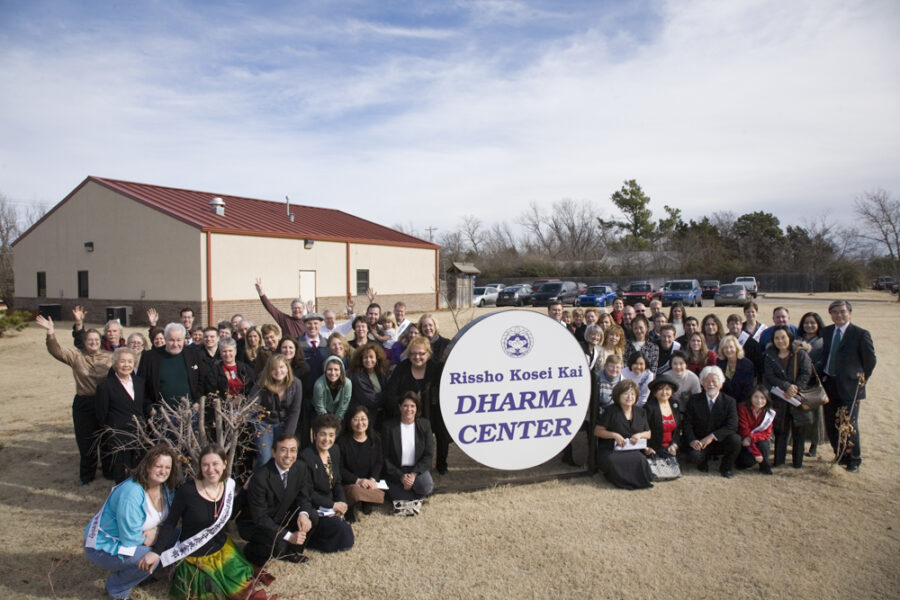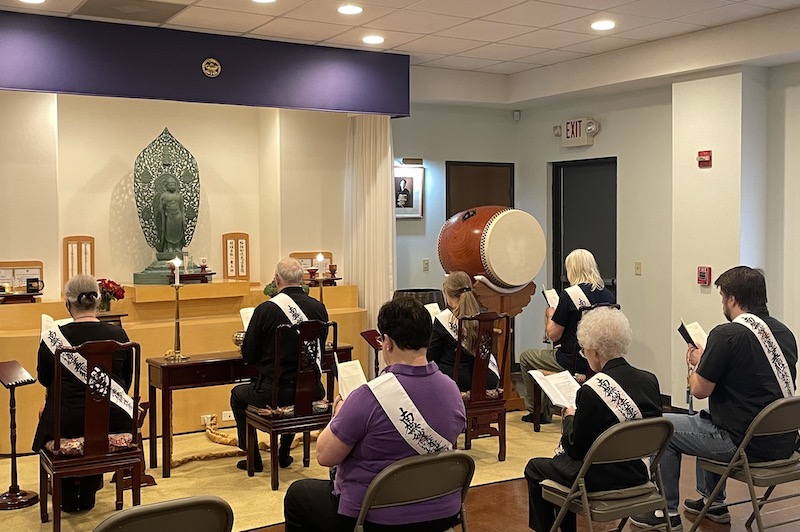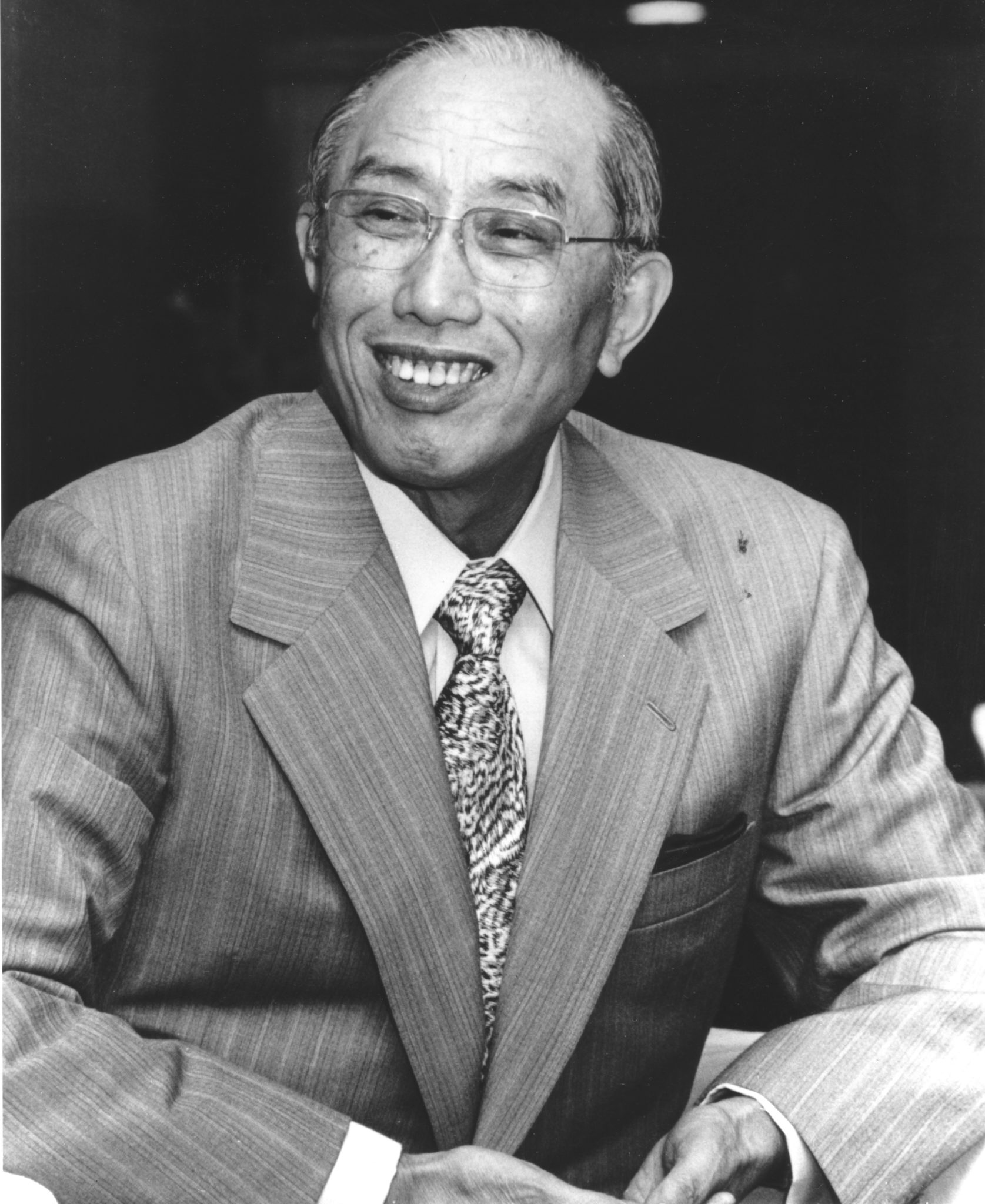
Introduction
The Dharma Center of Oklahoma is part of the international lay-people Buddhist organization called Rissho Kosei-kai. Members of this community do seem to be able to practice Buddhism as a religion. The Dharma Center Mission Statement indicates that the center is meant to be a place for practicing and studying Buddhist principles and using meditation for spiritual growth. The website defines the most important universal Buddhist principles as The Seal of the Three Laws, The Four Noble Truths, The Eightfold Path, and The Law of the Twelve Causes. They also indicate in their summary of Buddhism that they give primacy to the Lotus Sutra as the teachings of Shakyamuni Buddha. A thirty minute long video of the Lotus Sutra recitation in English is provided under their Member Resources page. To the organization, inclusivity and compassion in everyday life and being aware of how one’s actions affect the world around them are important. Interestingly, the title of the leader for the community is Reverend. This is a title with Christian implications in America and so might be used to give religious legitimacy to Rissho Kosei-kai in a predominately Protestant country.
The community also has affiliations with interfaith organizations, indicating that leadership and members of this community want this center to be perceived as a religious organization rather than a group that is more of a hobby. This being said, statements on the website indicate that people who join are able to conceive of Rissho Kosei-Kai Buddhism as a philosophy that is useful for modern day to day life. Although the community does not provide demographics, there are many pictures of the community in their Gallery. While there are some exceptions, this particular center is predominately Euro-American. Indeed, there are some aspects of the way the website portrays the community that might appeal to a Euro-American. For instance, one heading from the About page is “Ancient Wisdom — Modern Teaching Techniques.” The idea of access to “ancient wisdom” is one aspect of Buddhism that is known to be of interest to people in North America who are not of Asian descent.
The Dharma Center hosts weekly events, including a Sunday morning Dharma Circle. This gives primacy to chanting, meditation, and discussion. On Monday nights there is a Dharma Cycle, Tuesday night a book club on Buddhist resources, Wednesday night a class on Buddhist principles and history, and Thursday nights are dedicated to meditation. The website stresses that there are no sign-ups for these classes and that everything is free. There are donation links throughout the Oklahoma Dharma Center website, so it is likely that funding for these events comes through donors.


Affiliated Tradition: Rissho Kosei-kai

The Dharma Center of Oklahoma is an official Rissho Kosei-kai Buddhist center. Rissho Kosei-kai is relatively new in terms of Buddhist history, which the organization says goes back 2,500 years. It was founded not in America but in Japan on March 5th, 1938. This particular branch of Buddhism developed out of Nichiren Buddhism, an offshoot in Japan of the Mahayana School. Today, there are branches in the USA, Brazil, Republic of Korea, Taiwan, Thailand, Nepal, India, Cambodia, Japan, Sri Lanka, Bangladesh, Russia, China, and Mongolia. The principles of Mahayana Buddhism according to the international website for Rissho Kossei-kai are that:
- All sentient beings can attain perfect enlightenment, or buddhahood, and nothing less than this is the appropriate final goal of believers;
- The Buddha is eternal, having existed from the infinite past and appearing in many forms throughout the ages to guide and assist living beings through the teaching of the Wondrous Dharma; and
- The noblest form of Buddhist practice is the way of the bodhisattvas, those who devote themselves to attaining enlightenment not only for themselves but for all sentient beings.
What makes Rissho Kossei-kai unique is how it utilizes these traditional teachings to be relevant for modern practitioners. This can be seen in the description of the primary principles of Rissho Kosei-kai found on the Oklahoma Dharma Center’s website:
- The Dharma (teachings) based on the Lotus Sutra and other Buddhist teachings.
- Practical application of the Dharma for the purpose of working towards a more peaceful society and way of life
- Hoza (the circle of harmony) is a method through which members in the group assist each other in learning about the Buddhist traditions and applying them to their daily lives in the context of knowing that everything has a Buddha-nature. Because of this, each moment is an opportunity and contains the capacity to “transform illusion into reality” through the bodhisattva way.
The International Rissho Kosei-kai website also provides a Members’ Vow that is meant to be recited at events:
We members of Rissho Kosei-kai
Take refuge in the Eternal Buddha Shakyamuni
And recognize in Buddhism a true way of liberation
Under the guidance of our revered founder, Nikkyo Niwano.
In the spirit of lay Buddhists,
We vow to perfect ourselves
Through personal discipline and leading others
And by improving our knowledge and practice of the faith,
And we pledge ourselves to follow the bodhisattva way
To bring peace to our families, communities, and countries and to the world.
In both the Members’ Vow and the description of the guiding principles it is evident that Rissho Kosei-kai finds importance in harnessing Buddhist teachings for ethical practices such as creating peace.
Founder:

Rissho Kosei-kai Buddhism was founded by a lay person named Nikkyo Niwano. Niwano was born in Japan in 1906 and began the organization in order to alleviate suffering that people around him faced by evangelizing the Lotus Sutra. A core belief of Niwano is that regardless of their location of origin, religions all come from the same source. For this reason he spent a good deal of his life promoting cooperation among various world religions for the purpose of creating world peace. Niwano had lived through World War Two and his experiences as a man from Japan ignited him to seek disarmament, particularly pertaining to nuclear weaponry. He received recognition and numerous awards for his contributions to these efforts, including the Templeton Foundation Prize for Progress in Religion in 1979. The Vatican also gave Niwano the honor of being Knight Commander with the Silver Star of the Order of St. Gregory the Great in 1992. He passed away in 1999, but is survived by his organization and publications including Lifetime Beginner, Buddhism for Everyday Life, A Buddhist Approach to Peace, Buddhism for Today: A Modern Interpretation of the Threefold Lotus Sutra, Shakyamuni Buddha: A Narrative Biography, and Invisible Eyelashes.
Community Leadership for the Dharma Center of Oklahoma
Although the center is part of a larger lay-people organization, there is still some hierarchy within the community. For instance, the community’s website claims to have several instructors, or “skilled Dharma Teachers.” They are not listed on the website themselves, but are described as having the job of supporting the community’s head and assisting the Dharma’s visitors. It can be assumed that they are all trained to some extant in the Rissho Kosei-kai tradition. While it is true that not much information is provided regarding the lower ranking Dharma Teachers, the head of center is given a rather detailed biography. Her name is Reverend Kris Ladusau and her official title is “spiritual head of the Rissho Kosei-kai Dharma Center of Oklahoma.” From the picture provided of her on the website it can be assumed that Ladusau is Euro-American. She was actually raised as Methodist in Oklahoma and did not encounter Buddhism until the early 1970s. In 1984, Ladusau began to practice Rissho Kosei-kai and began receiving certifications through them. In 2000 she obtained a Dharma Teacher Certification. She also “received Gohozon in 1995,” and “Goshugoshonjiin in 2004.” (Unfortunately neither the Oklahoma Dharma Center website nor the official Rissho Kosei-kai international website provided information on the meanings of these.) Interestingly, Ladusau is the very first Rissho Kosei-kai Reverend who is not of Asian descent.
She is involved with other branches of Rissho Kosei-kai as well. She develops English Buddhist curricula at the Rissho Kosei-kai of North America in California (the location makes sense given the proximity of the state to Japan), teaches seminars for Rissho Kosei-kai leaders, and even works on ongoing projects with the International Office of Rissho-Kosei-kai in Tokyo, Japan. Outside of the Rissho Kosei-kai context, Reverend Ladusau is on the board for the Interfaith Alliance of Oklahoma, is a board member for Religions United or Oklahoma Conference of Churches, gives talks on Buddhism at non-affiliated colleges and high schools, and serves as a Spiritual First Responder for Natural Disasters in Oklahoma. She was also selected to speak on behalf of Rissho Kosei-kai at the 2015 Interfaith European Peace Symposium, held that year in Albania. It is evident that Reverend Ladusau is experienced and has recognized authority in both the Rissho Kosei-kai and non-Buddhist communities. The fact that this is the case confuses the idea of this sect of Buddhism being for lay people. It is true that she is not a monastic as you would see with older forms of Buddhism, but the title Reverend gives reference to Protestant Christian clergy, and she has gone through presumably more rigorous training in her tradition than the people who come to events at the Dharma Center, and even the other unnamed Dharma Teachers. It seems to me that the reason behind the claim that this a lay-people organization is to highlight that this tradition is adaptable to modern daily life.
Sources:
https://www.britannica.com/topic/Rissho-Kosei-kai
https://www.bbc.co.uk/religion/religions/buddhism/subdivisions/nichiren_1.shtml